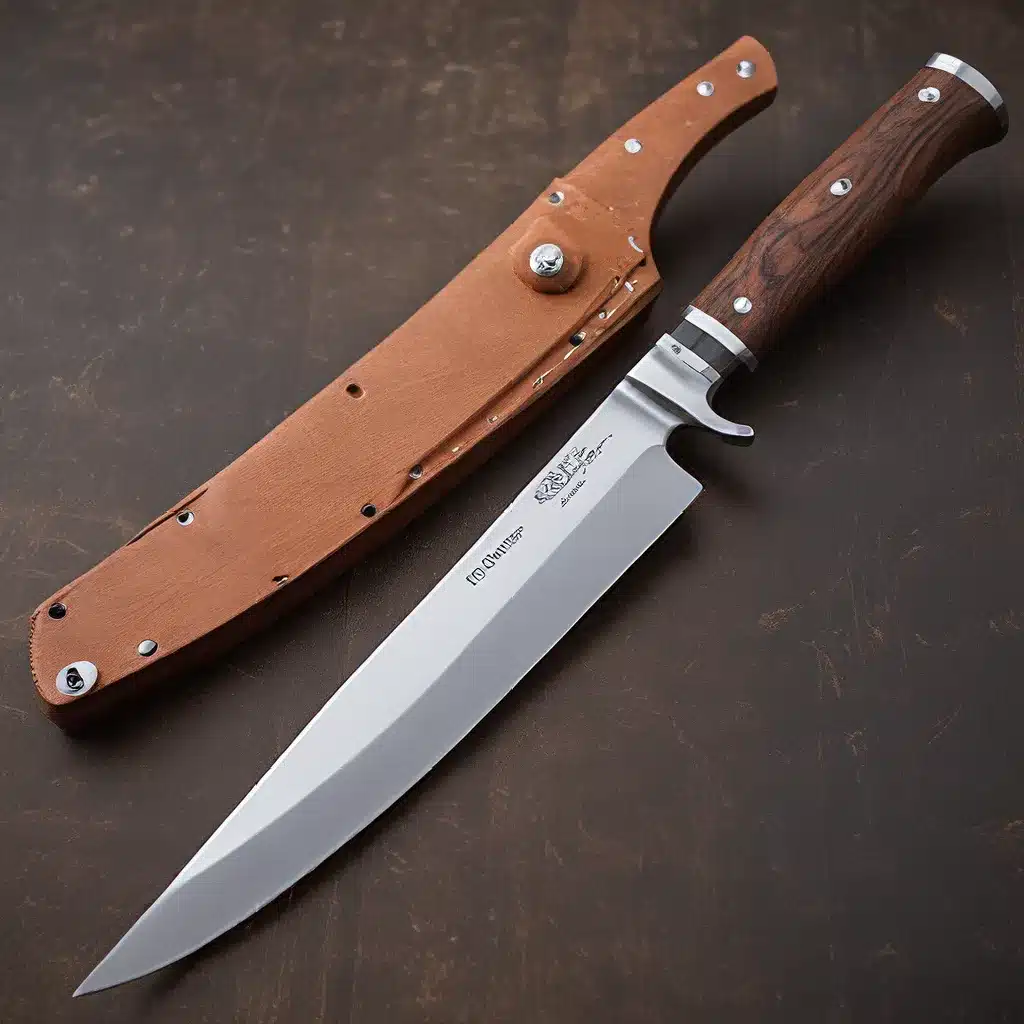
As someone who takes their culinary skills seriously, I know the importance of having a reliable, well-maintained set of knives. After all, a dull or damaged blade can make even the simplest kitchen task a frustrating ordeal. That’s why I’m excited to share with you some invaluable tips and tricks for extending the lifespan of your beloved blades.
Proper Maintenance: The Key to Longevity
Just like any other tool, taking care of your knives is crucial if you want them to last. And proper maintenance doesn’t have to be a chore – in fact, it can be quite satisfying to see your blades gleaming and sharp, ready to tackle any culinary challenge that comes your way.
One of the most important things to remember is to clean your knives after each use. Letting food and debris accumulate on the blade can lead to corrosion, dulling, and even structural damage over time. I like to give mine a quick wash with warm, soapy water, followed by a thorough drying with a clean towel. And don’t forget to store them properly, either in a knife block or a dedicated drawer with protective sheaths.
Sharpening: The Secret to Razor-Sharp Blades
As the experts at Instructables suggest, regular sharpening is the key to keeping your knives in top shape. I try to sharpen mine at least once a month, using a high-quality sharpening stone or an electric sharpener. This not only restores the edge but also helps prevent the blade from becoming too thin and fragile over time.
One trick I’ve learned is to flip the blade over before sharpening, as this can help to even out the wear and tear and extend the overall lifespan of the knife. Just be sure to maintain the same angle and number of strokes on each side for optimal results.
Choosing the Right Blade for the Job
As the experts at Scotchman advise, using the wrong type of blade for the material you’re cutting can cause it to dull much faster. For example, a fine-toothed blade is better suited for slicing through delicate foods, while a coarser blade is ideal for tackling tougher items.
I always make sure to match my knife to the task at hand, whether I’m slicing through a juicy steak, dicing up vegetables, or neatly carving a roast. And if I’m ever in doubt, I’ll consult the experts or refer to a handy blade selection guide to ensure I’m using the right tool for the job.
Honing and Polishing: Keeping Your Blades in Top Shape
In addition to regular sharpening, honing and polishing your knives can also help to extend their lifespan. Honing, which involves running the blade across a steel or ceramic rod, helps to realign the edge and keep it razor-sharp between sharpenings.
I like to make honing a part of my routine, giving each blade a quick pass before and after use. And for an extra touch of shine, I’ll occasionally polish the blades with a specialized knife polish or even a bit of olive oil. This not only keeps them looking great but also helps to protect the metal from corrosion and wear.
Automation and Technology: The Future of Knife Maintenance
As the experts at Scotchman point out, using a semi-automatic or fully-automatic cold saw can increase the life of your blade by up to 30% compared to a manual feed machine. And the same principle can be applied to knives as well.
I’ve recently been experimenting with some of the latest automated sharpening and honing devices, and I have to say, they’ve been a game-changer. These nifty little gadgets take the guesswork out of blade maintenance, ensuring a consistent edge and prolonging the life of my knives. Plus, they’re just plain fun to use!
Of course, technology is always evolving, and I’m sure there will be even more exciting innovations in the world of knife care in the years to come. But for now, I’m happy to have these high-tech helpers in my culinary arsenal, helping me to keep my blades in tip-top shape.
The Importance of Quality Craftsmanship
At the end of the day, the longevity of your knives is also heavily dependent on the quality of their craftsmanship. That’s why I’m a big proponent of investing in well-made, high-quality blades from reputable manufacturers like Herman Knives.
These knives are built to last, with sturdy construction, precision-ground edges, and materials that are resistant to corrosion and wear. And when paired with the proper maintenance techniques I’ve outlined here, they can easily become lifelong companions in the kitchen.
Embracing the Journey of Knife Care
At the end of the day, caring for your knives is an ongoing journey, one that requires a bit of time and effort but ultimately pays off in the form of sharp, reliable blades that will serve you well for years to come. So, embrace the process, experiment with different techniques, and take pride in keeping your culinary tools in tip-top shape.
Who knows, you might even find that the ritual of knife maintenance becomes a cherished part of your cooking routine, a meditative moment of zen amidst the chaos of the kitchen. And wouldn’t that be a delightful discovery?
So, there you have it – my top tips for extending the life of your beloved blades. Whether you’re a seasoned chef or a home cook just starting out, I hope these insights help you to keep your knives in peak condition and ready to tackle any culinary challenge that comes your way. Happy cooking!


